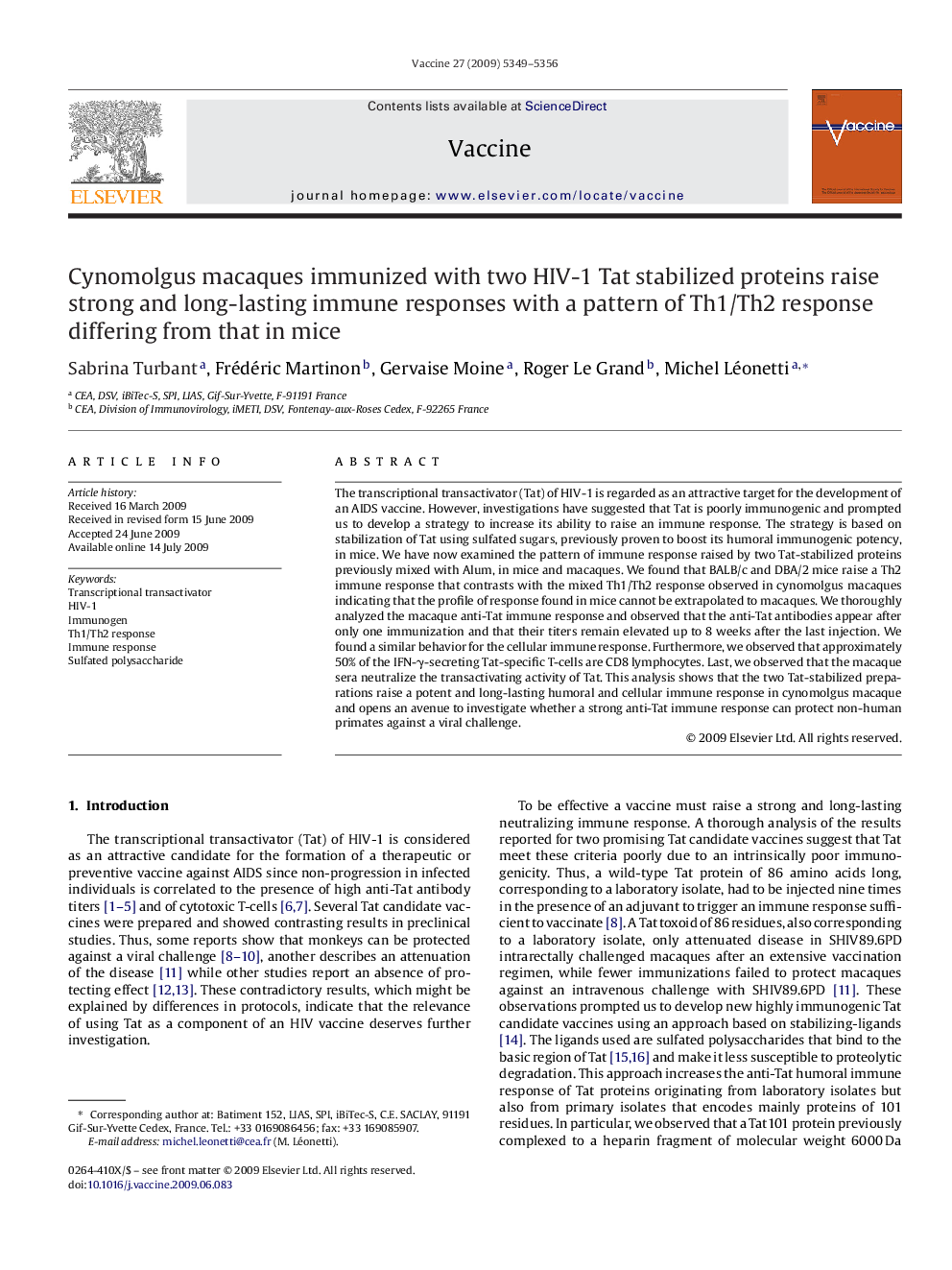| Article ID | Journal | Published Year | Pages | File Type |
|---|---|---|---|---|
| 2405213 | Vaccine | 2009 | 8 Pages |
The transcriptional transactivator (Tat) of HIV-1 is regarded as an attractive target for the development of an AIDS vaccine. However, investigations have suggested that Tat is poorly immunogenic and prompted us to develop a strategy to increase its ability to raise an immune response. The strategy is based on stabilization of Tat using sulfated sugars, previously proven to boost its humoral immunogenic potency, in mice. We have now examined the pattern of immune response raised by two Tat-stabilized proteins previously mixed with Alum, in mice and macaques. We found that BALB/c and DBA/2 mice raise a Th2 immune response that contrasts with the mixed Th1/Th2 response observed in cynomolgus macaques indicating that the profile of response found in mice cannot be extrapolated to macaques. We thoroughly analyzed the macaque anti-Tat immune response and observed that the anti-Tat antibodies appear after only one immunization and that their titers remain elevated up to 8 weeks after the last injection. We found a similar behavior for the cellular immune response. Furthermore, we observed that approximately 50% of the IFN-γ-secreting Tat-specific T-cells are CD8 lymphocytes. Last, we observed that the macaque sera neutralize the transactivating activity of Tat. This analysis shows that the two Tat-stabilized preparations raise a potent and long-lasting humoral and cellular immune response in cynomolgus macaque and opens an avenue to investigate whether a strong anti-Tat immune response can protect non-human primates against a viral challenge.
